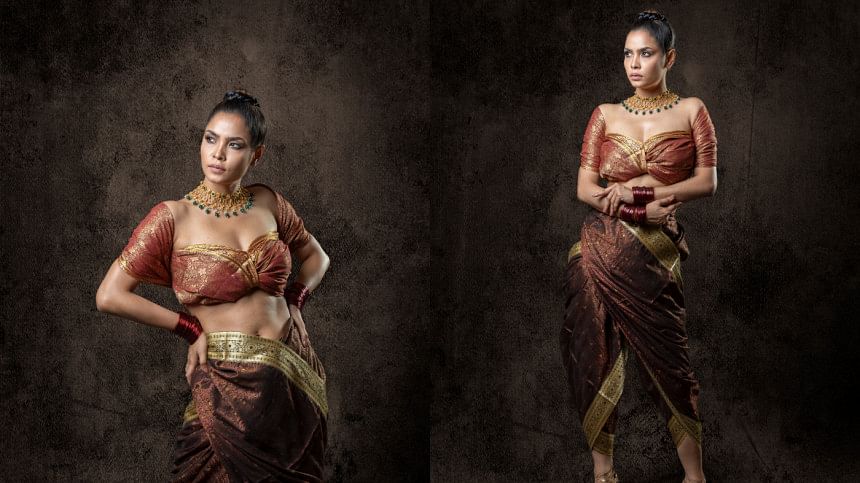5 ways to master the timeless art of draping a sari

When it comes to dressing traditionally, there are not many outfits that rival the enchanting allure and timelessness of a sari. It's not merely a piece of cloth; it's an embodiment of grace and heritage. Thanks to the incredibly talented designers and stylists of our time, the art of sari draping has only gotten better but more innovative with time.
The art of draping a sari is an intricate affair, with each region boasting its own unique style, weaving a tapestry of captivating traditions. While there is no debate on which is the better style, here are 5 ways to drape your favourite sari the next time.
The Bengali Drape
The 'atpourey', commonly known as the Bengali drape, is perhaps the oldest sari style we know of. With only a few box pleats on the waist, the most beautiful part of this drape is the elaborate long ends of the sari making their way from our left shoulder around our back and all the way to our right.
Although mostly worn with katan, handloom, or jamdani this drape has also seen its fair share of innovations with time. Waist chains or embellished belts add a touch of contemporary to the classic while flawless shoulder pleats give us a more polished look.
The Waterfall Drape
Taking a small step outside the 'perfect pleat' style, the waterfall drape spreads out the small pleats around the front of the waist instead of locking them on one side with the safety pin.
This style is perfect for any lightweight saris, especially on a daylong event. The pattern and comfort will serve the daytime look in any colour while adding a carefree vibe to your steps.
The Lehenga Style
The Lehenga style, inspired by the traditional blouse and skirt ensemble, combines the elegance of a sari with the modern flair of a skirt. The trick with this one is to replace a regular petticoat with a voluminous skirt.
Perfect for grand celebrations and weddings, this style involves creating pleats by tucking the sari all around the waistline of the skirt. The other end is then draped over the shoulder or wrapped around the arms, exuding a regal charm and elevating the sari to the epitome of couture.
Depending on the type of skirt you choose, the lehenga sari can be crafted into a gown style, a mermaid style even the recently popular, infinite drape style.
The Butterfly Drape
Butterfly drape is yet another contemporary take on the classic sari. This style is marked by its innovative draping technique, which results in pleats at the back rather than the front.
Instead of a tight-polish placement, the pleat of a butterfly drape makes a drop around the waist and comes together on the shoulder, giving it more of a flowy motion and a distinct butterfly-wing-like appearance.
The Evening Dress Style
A very edgy take on the traditional look, the dress style drape if for anyone aiming to make a statement with their sari.
Eliminating the petticoat, you can create asymmetric pleats securing them with a belt around the waist or a perfect knot on the shoulder. You can switch up the pleats to make it into a V-neck dress, accentuating the collarbone.
Pair it up with the right accessories and you have got yourself a perfect evening dress.
Pants-style Sari
The pant-style sari introduces an unconventional yet stylish method of draping, bringing together the best of the fashion world. Fitted, belt-bottom or palazzo pants are used in place of the petticoat, providing the mobility we never knew was possible in a sari.
An ethnic and modern look is combined by wrapping the sari around the waist and then wrapping it over the legs like pants. Fashion-forward women looking to make a statement have taken a huge liking to this avant-garde look.
In the ever-evolving world of fashion, the sari has established itself as a timeless canvas for creativity and versatility, allowing numerous ways to style while also staying rooted in rich cultural heritage. So, whether you embrace tradition or welcome the boldness of contemporary style, the goal is to reflect your own personality through these outfits.
Model: Anamika
Styling: Soniya Yeasmin Isha
MUA: Sumon

 For all latest news, follow The Daily Star's Google News channel.
For all latest news, follow The Daily Star's Google News channel. 








Comments